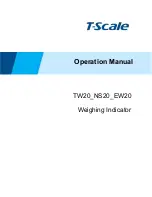
Page
13 www.greyline.com
3
On each guide rail, attach one end of a securing chain to a hook on the tensioning bar (B), wrap the chain
around the pipe (G) and then attach it to the hook on the other end of the tensioning bar whilst keeping the
chain as tight as possible.
4. Rotate the complete guide rail assembly so that it is approximately 45° with respect to the top of the pipe.
Then tighten the chain by turning the tensioning thumb-wheel (A) on each guide block until the assembly is
securely attached to the pipe.
Note:
If you are unable to get sufficient tension on the chain to hold the assembly in place, fully slacken the
tensioning thumb-wheel and shorten the effective length of the chain wrapped around the pipe by connecting
the tensioning bar to the next link in the chain, then re-tension.
2.2.3 Fitting the transducers
Figure 2.3 Fitting the transducers
1. Slide the transducer cover plate (A) fully towards the outside of the guide assembly to allow sufficient access
to fit the transducer.
2. Clean the face of the transducer, removing all traces of dirt and grease.
3. Apply a 1/8” (3mm) bead of ultrasonic couplant along the centre length of the transducer (E).
4. Fit the transducer into the guide block – ensuring the lugs on the sides of the transducer are correctly located
into the slots on the sides of the guide block (B).
5. Slide the transducer cover plate (A) over the top of the transducer and tighten the thumbscrew (C) finger tight
to secure the transducer in place. When securing the cover plate take care to leave sufficient room around
the transducer connector (D) to connect the cable.
6. Repeat the above steps for the second transducer.
7. Connect the transducers to the Portaflow instrument using the coaxial cables provided. The RED cable must
be connected to the upstream transducer and the BLUE cable to the downstream transducer.
A: Transducer cover plate.
B: Transducer locating slot/lug.
C: Transducer cover plate securing screw.
D: Transducer cable connection.
E: Ultrasonic
couplant
application.














































